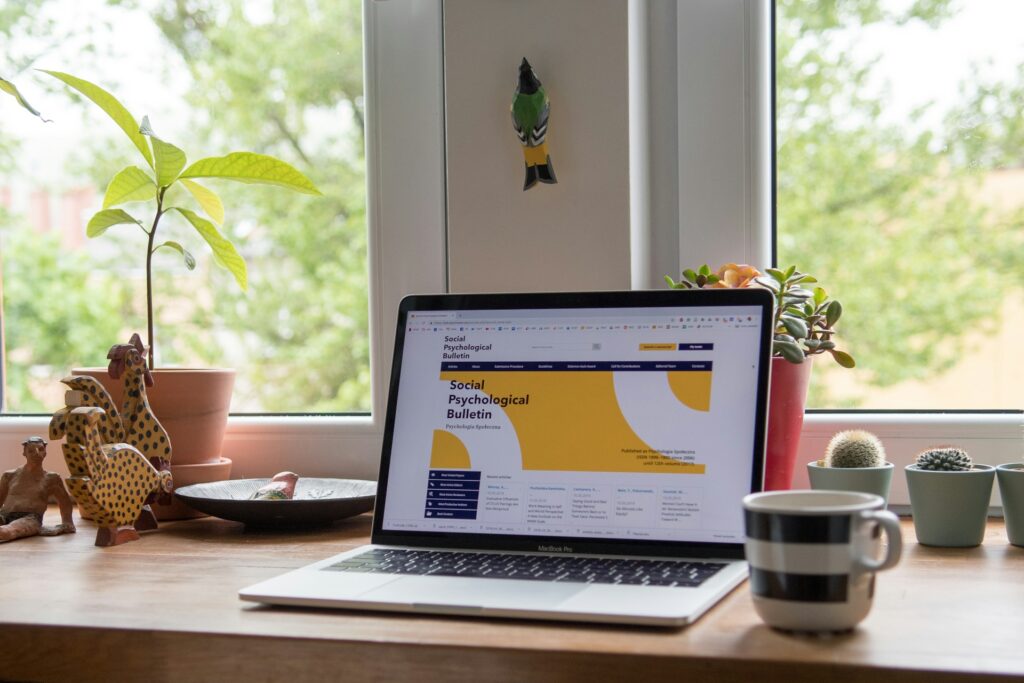Doubling a landing page’s conversion rate isn’t just luck. It’s really about knowing what makes people act, taking out the stuff that slows them down, and showing the right offer in a way that clicks. With the right optimisation techniques, you can turn more visitors into customers without needing more traffic or a bigger ad budget.
Good optimisation starts with clarity. Every piece — headline, images, call-to-action — needs to nudge someone toward one clear outcome. The best pages line up their message with what brought the visitor there in the first place, build trust with real proof, and use a design that makes the next step obvious.
This isn’t guesswork. Optimisation runs on data, testing, and tweaking to figure out what actually works for your audience. Mix that with strong SEO, smart user experience, and a peek at real-world high performers, and you’ve got a system that keeps getting better.
Understanding Landing Page Optimisation and Conversion Rates
Landing page optimisation is about improving page elements so visitors are more likely to take action. When you line up design, content, and how the page works with what your audience needs, you can boost conversions without blowing up your marketing spend.
What Is Landing Page Optimisation?
Landing page optimisation (LPO) means tweaking a landing page so it converts more visitors. It’s one part of the bigger picture: conversion rate optimisation (CRO).
An optimised landing page gives people targeted content, a clear value proposition, and a smooth experience. That means better headlines, stronger call-to-action (CTA) buttons, faster loading, and a mobile-friendly layout.
The main goal? Remove what gets in the way and make converting feel natural. For example, Hotjar’s guide to landing page optimisation suggests using heatmaps and feedback to spot where people lose interest.
Key things to check in LPO:
- Headline clarity
- Visual hierarchy
- Form length and simplicity
- Trust indicators (reviews, security badges)
It’s all about changes based on real user data, not just hunches. That way, you can measure and repeat what works.
Defining Conversion Rate and Good Benchmarks
A conversion rate is the percentage of people who do what you want — buy, sign up, whatever. Here’s the simple formula:
Conversion Rate (%) = (Conversions ÷ Total Visitors) × 100
Benchmarks swing a lot depending on your industry and offer. Ecommerce landing pages often see 2–4%, while B2B lead generation pages might hit 5–10%. SamCart’s conversion rate optimisation advice points out that even small bumps in your rate can make a big difference in revenue.
Always compare your numbers to the right industry averages, not just random stats. Traffic source, what people want, and your product type all matter when deciding what’s “good.”
Track your conversion rate over time, and watch bounce rate and average session duration too. That gives you a clearer sense of how well your landing page really works.
The Role of CRO in Digital Marketing Strategy
CRO is a must-have in any digital marketing strategy because it helps you get more value from the traffic you already have. Instead of throwing more money at ads, you fine-tune your landing pages for better results from the same audience.
A great landing page lines up your marketing with what users expect. For example, matching ad copy to the landing page headline keeps things relevant and can lower bounce rates.
Strikingly’s step-by-step approach to landing page optimisation says CRO also helps you build long-term growth by making your conversion path reliable.
Some CRO basics:
- A/B testing page elements
- Analysing user behaviour with heatmaps and similar tools
- Improving mobile usability
- Adding trust and credibility with social proof
When you weave CRO into all your campaigns, data-driven tweaks start to add up over time.
Core Elements of High-Converting Landing Pages
The best landing pages steer visitors to one clear action with as little friction as possible. They use sharp messaging, a logical layout, and smart design to bump up conversions. Every part of the page helps clear up confusion and boost confidence.
Clear and Compelling Headlines
The headline’s usually the first thing people see. It needs to spell out the main benefit fast. Direct, specific, and focused on the outcome — that beats a list of features any day.
Take “Get Your First Order Delivered in 24 Hours” — it’s way more enticing than just “Fast Delivery Service” because it gives a real promise. Try out different versions with A/B tests to see what actually gets clicks.
Headlines work best when they match what the visitor expects. If someone clicked an ad for a discount, the headline should back that up right away. Consistency here helps keep bounce rates down.
Subheadings can fill in details without making the main headline too busy. Keep the big message tight, but add context where it helps.
Unique Value Proposition
Your unique value proposition (UVP) is why someone should pick you over the other guys. It should answer: What is it? Why should they care? Why pick you?
Put your UVP up top, near the headline. Shopify’s guide on high-converting landing pages says a strong UVP hits the visitor’s pain points and spells out the benefit clearly.
Clarity wins over cleverness. “Save 30% on Energy Bills in 3 Months” is concrete and believable. Skip the empty stuff like “We’re the best in the business.”
Back up your UVP with trust signals — testimonials, case studies, or certifications all help make you look legit and lower the risk for visitors.
Effective Landing Page Copy
Your copy should walk the reader from interest to action. Make it easy to skim: short paragraphs, bullet points, bolded phrases.
Reinforce the headline and UVP as you go. Each section should answer objections, spotlight benefits, and offer proof. For example, drop customer reviews right under a product description to back up your claims.
Skip the jargon unless your audience expects it. The aim is to make your offer clear to as many people as possible.
Persuasion helps — urgency (“Offer ends Friday”) or social proof (“Join 10,000+ happy customers”) can nudge people, but keep it honest.
Strong Calls-to-Action (CTAs)
A call-to-action (CTA) tells people what to do next. The best CTAs use clear, punchy language like “Start Your Free Trial” or “Book a Consultation Today.” “Learn More” just doesn’t cut it.
Where you put CTAs matters. They should show up above the fold and pop up again where it makes sense. Make them stand out with color and space.
High-converting landing page best practices suggest limiting how many CTAs you have. If you use more than one, they should all point to the same main action to keep things focused.
Little notes under the CTA, like “No credit card required” or “Cancel anytime,” can ease last-minute worries and boost clicks.
Should I add the next section on “Reducing Friction and Improving Cognitive Ease” so this article flows better? Let me know if you want to see it.
Building Trust and Credibility for Higher Conversions
People are way more likely to fill out a form or buy if they trust your brand and feel their info’s safe. Showing real proof you’re reliable, sharing honest customer stories, and making security obvious can put visitors at ease and make their journey smoother.
Utilising Social Proof and Testimonials
Social proof lets potential customers see that others had good experiences. That can calm nerves and make folks more comfortable taking the next step.
Testimonials work best when they’re specific and actually relevant. Skip the generic praise — focus on what problem you solved, how, and what changed. For example:
| Weak Testimonial | Strong Testimonial |
|---|---|
| “Great service!” | “The software reduced our processing time by 40% within three months.” |
Adding real names, photos, and company details makes testimonials more believable. Reviews from trusted third-party sites help too. According to Trustpilot, 89% of people check online reviews before buying, so solid testimonials are a big deal.
Trust Seals and Security Features
If you’re asking for payment or personal info, people want to know it’s safe. Trust seals from companies like Norton, McAfee, or SSL badges can help a lot.
Trustpilot notes that 61% of users have bailed on a purchase when they didn’t see security badges. These little icons show your site follows security best practices.
Where you put them matters. Security badges work best near payment forms or CTAs. Linking to your privacy policy is another way to show you’re transparent, especially when people are about to make a decision.
Storytelling to Build Connection
Storytelling adds a human touch and shows you get what your customers need. Instead of just listing features, tell a real story about how your product or service solved a problem.
Keep it short and honest: what was the challenge, what did you do, and what happened next? That makes your offer feel more real and trustworthy.
Customer quotes, before-and-after stats, or mini case studies all help. Throw in a photo or a short video, and you can really connect emotionally while still keeping things believable.
Design and User Experience Best Practices
A good landing page uses clear visual hierarchy, loads quickly, and looks great on any device to guide visitors toward one main action. Smart design choices make things easier for users, help keep them from bouncing, and increase your chances of a conversion.
Above the Fold Optimisation
The part people see first — above the fold — needs to get your main value across right away. Visitors decide fast if they’ll stick around, so don’t waste this space.
Usually, you want:
- Headline with the main benefit or offer
- Subheading for a bit more context
- Primary call-to-action (CTA) button
- Relevant visual or product image
Keep it simple. Too many graphics or links just muddy the waters. Make sure your headline and images match the promise you made in your ad or search snippet — that way, visitors know they’re in the right place.
Put the CTA above the fold so it’s right there. Repeating it further down catches folks who need more info before they act.
Visual Elements and Graphics
Visuals should back up your message, not pull attention away from it. Good images, short explainer videos, or product mock-ups help people quickly get what you’re offering.
Use a visual hierarchy so the eye moves from headline to supporting text, then to the CTA. You can do this with size, color contrast, and where you put things on the page.
Graphics need to match your brand’s style guide. If you use clashing colors or blurry images, people might trust you less.
Show the product in action when you can. On a SaaS page, that might mean a dashboard screenshot. On an e-commerce page, maybe a lifestyle photo. These choices make things clearer and help build trust.
Mobile Responsiveness and Page Speed
Most traffic these days comes from mobile devices, so responsive design isn’t optional. Elements have to resize and stack for smaller screens. People shouldn’t have to scroll sideways or pinch to zoom.
Navigation should stay simple, and buttons need to be big enough for thumbs. Text should be easy to read without any zooming in.
Slow pages lose visitors fast. According to Swipe Pages, more than half of people bounce if a page takes over three seconds to load.
To speed things up, try:
- Compressing images so they’re smaller but still look good
- Using modern file formats like WebP
- Cutting down on scripts and third-party code
- Letting browsers cache your stuff
Data-Driven Optimisation and Continuous Improvement
Landing page optimisation works best when you lean on real data instead of gut feelings. Teams get better results by testing different versions, watching how people behave, and making changes based on what users actually do.
A/B Testing and Landing Page Experiments
A/B testing puts two or more versions of a page head-to-head to see which one hits your goal harder. You might try out new headlines, different CTA buttons, shorter forms, or a fresh layout.
Good tests start with a clear idea of what you’re changing and why. Only change one thing at a time, and make sure enough people see each version so your results mean something.
Platforms like Optimizely, VWO, or Google Optimize can handle the test setup and reporting. They’ll split your audience between variants so you can see which one converts better, no guessing required.
A/B testing works best as part of a structured landing page optimisation checklist. Focusing on high-impact elements first keeps your changes focused and measurable.
Using Analytics and Heatmaps
Analytics tools like Google Analytics or Mixpanel track things like bounce rate, conversion rate, and time on page. These numbers help you spot where people lose interest or drop off.
Heatmaps add a visual layer. Click maps show what people interact with most, move maps show where their cursors go, and scroll maps reveal how far people actually scroll.
Hotjar combines heatmaps with session recordings, making it easier to spot friction points. Say your scroll map shows most visitors never reach your CTA. You might want to move it higher up the page.
When you blend analytics with heatmaps, you get a much clearer sense of what’s happening on your page. That way, you can make changes that actually fix real problems, not just random tweaks.
Gathering User Feedback and On-Site Surveys
On-site surveys grab feedback from people while they’re still on the page. You can trigger these by time on page, exit intent, or after certain actions.
Keep questions short and to the point, like “What stopped you from completing your purchase today?” or “Was the information here clear?”
Hotjar and Qualaroo let you collect feedback without annoying users. Sometimes, feedback reveals issues analytics miss—like confusing copy or missing details.
Mixing survey results with behavioral data helps you see if what people say matches what they do. That way, you’re fixing actual barriers to conversion.
Iterative Improvements and Tracking Results
Continuous improvement is all about making small, data-backed changes over time, not just doing a big redesign every year or two. Track each tweak against a real metric so you know what’s working.
Google Analytics or Mixpanel dashboards make it easy to keep an eye on performance. Breaking down data by device, location, or source helps you spot where your changes hit hardest.
It’s smart to keep a log of what you’ve tested and what happened. That way, you don’t waste time repeating stuff that didn’t work before, and you build up a record of what actually moves the needle.
SEO and Organic Traffic for Landing Pages
Search engine optimisation (SEO) helps landing pages bring in visitors from organic search instead of just relying on paid ads. By improving technical stuff, content, and structure, you can get your page to rank better for the right keywords and reach people who are already looking for what you offer.
Optimising for Search Engine Visibility
Search engines prefer pages that are relevant, quick to load, and easy to use. Make sure your landing page uses targeted keywords in headings, subheadings, and the main text, but don’t force it.
Drop your keywords in early to show relevance. Add internal links to related pages so search engines get a sense of your site’s structure and pass along some ranking juice.
Technical stuff matters too. Mobile responsiveness, HTTPS security, and fast server response times all play a role. Google PageSpeed Insights can flag performance issues for you.
Getting high-quality backlinks from reputable sites boosts your credibility and can push your rankings up. According to landing page SEO best practices, pages with more solid backlinks tend to do better.
Meta Descriptions and Alt Text
A meta description is the little snippet under your page title in search results. It doesn’t directly affect rankings, but it can make people more likely to click.
To write a good meta description:
- Keep it between 150 and 160 characters
- Work in your main keyword naturally
- Clearly sum up what the page offers
Alt text describes images for screen readers and search engines. It helps with accessibility and adds keyword context.
For example, instead of “image1.jpg,” use something like “Organic coffee beans on a wooden table”. This helps visually impaired users and gives your SEO a nudge.
Both meta descriptions and alt text should be short, accurate, and not stuffed with keywords.
URL Structure and Organic User Behaviour
Clear, descriptive URLs help both people and search engines figure out what a page is about. Short URLs with relevant keywords, separated by hyphens, are easier to remember and read.
For example:www.example.com/organic-coffee-subscription beats www.example.com/p=12345 every time.
Stick with static URLs when you can. If you have duplicate content, use canonical tags.
User signals like dwell time and bounce rate can nudge your rankings up or down. If people leave fast, search engines may assume your page isn’t what they wanted. A sensible URL and good content can keep people around longer.
Advanced Strategies and Real-World Examples
Top-performing landing pages often lean on precise targeting, interactive features, and changes driven by real data. When you match your page to user intent and trim away anything unnecessary, you can boost sign-ups, sales, and lead quality without ramping up your ad spend.
Personalisation and Interactive Elements
Personalisation uses visitor data—like location, device, or past actions—to make the experience more relevant. You might see dynamic headlines, hand-picked product suggestions, or special offers based on where someone is.
Interactive stuff like sliders, polls, or image carousels can keep folks engaged longer. Plus, they give you extra behavioral data for future tweaks.
For example, dynamic text replacement tools can swap out a landing page headline to match the exact search term a visitor used. In Campaign Monitor’s test, this move bumped conversions by over 31 percent. That’s a pretty strong case for matching your copy to user intent.
Lead Generation Tools: Quizzes and Calculators
Quizzes and calculators can turn casual visitors into leads by offering personalized results in exchange for contact info.
A quiz might help someone pick the right product, while a calculator could estimate savings or ROI. These tools work because they deliver instant, relevant value and let you collect lead data for follow-up.
If you hook these up to your CRM, you can segment leads by what they want or how ready they are to buy. That way, your email follow-ups hit the mark without wasting ad dollars.
Reducing Customer Acquisition Costs
Cutting customer acquisition cost (CAC) is all about getting more conversions from the same traffic and making sure you’re attracting the right people. Testing small changes—like tweaking your CTA wording—can have a big impact without raising your ad budget.
For example, Going swapped out “Sign up for free” for “Trial for free” and saw trial starts jump by 104 percent. That small change actually helped paid channels beat organic conversion rates.
Other ways to lower CAC? Retarget people who bounced, speed up your page to keep them from leaving, and fine-tune your ad targeting to draw in visitors who are more likely to convert.




















